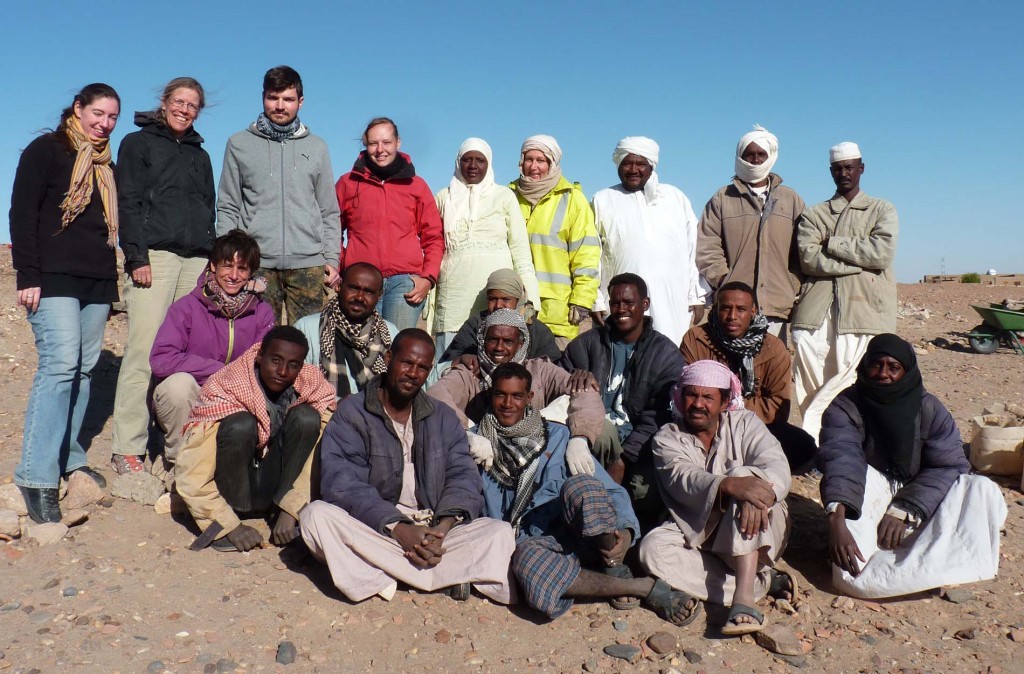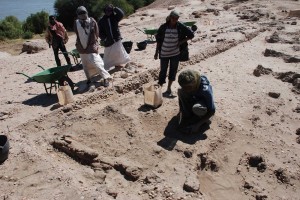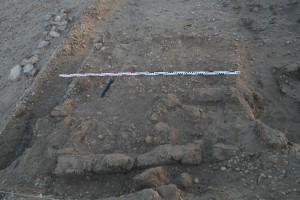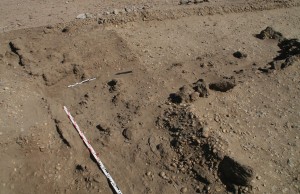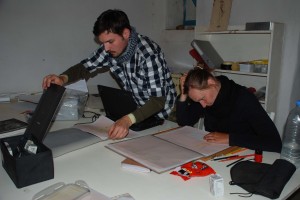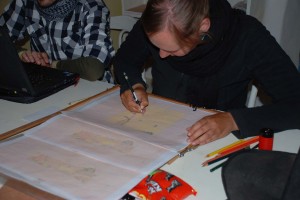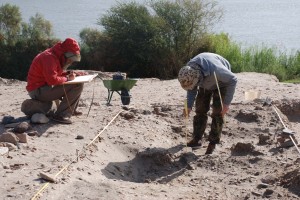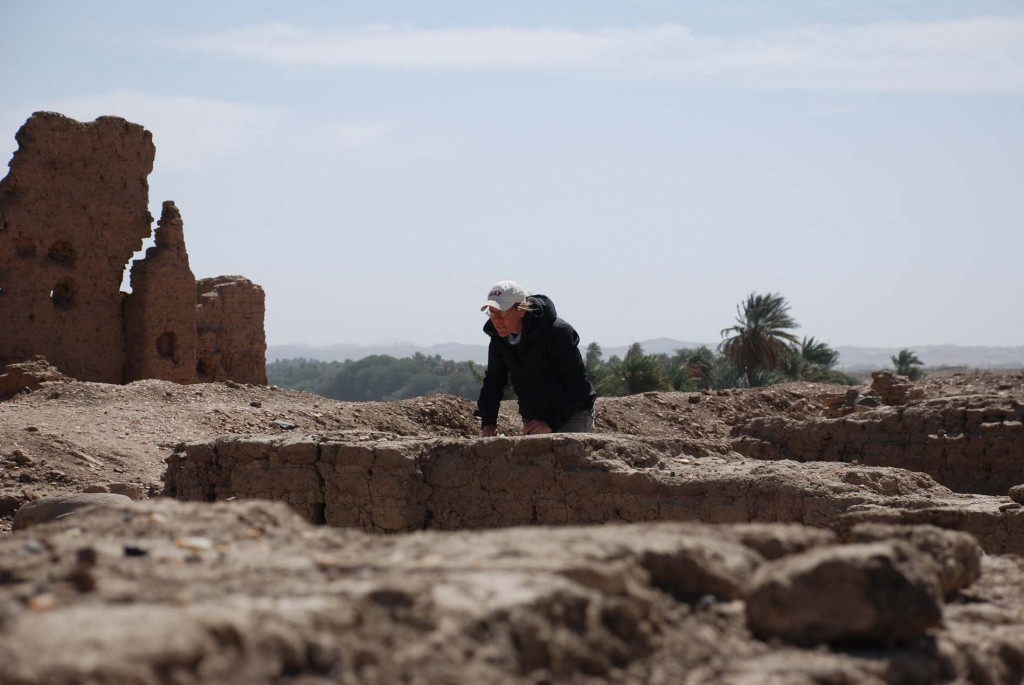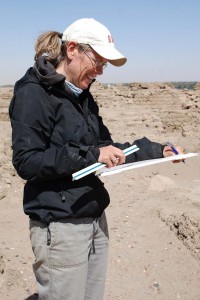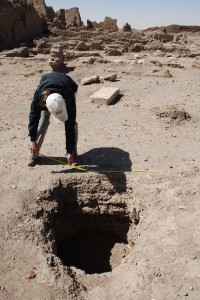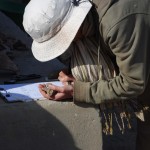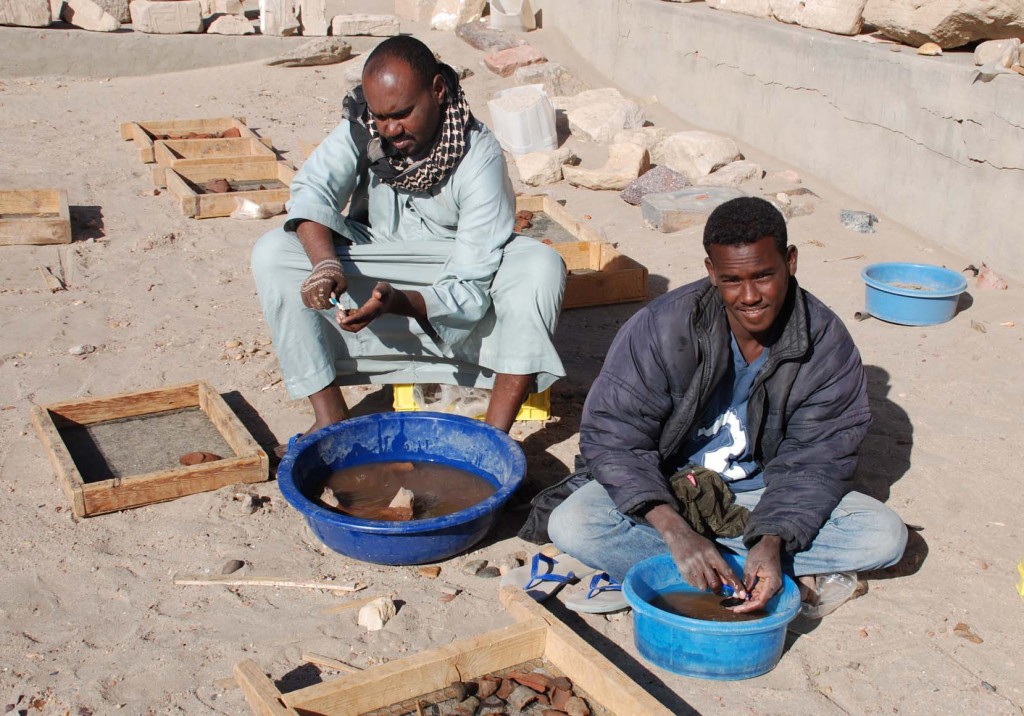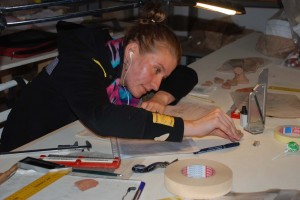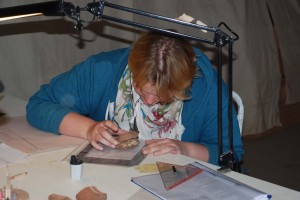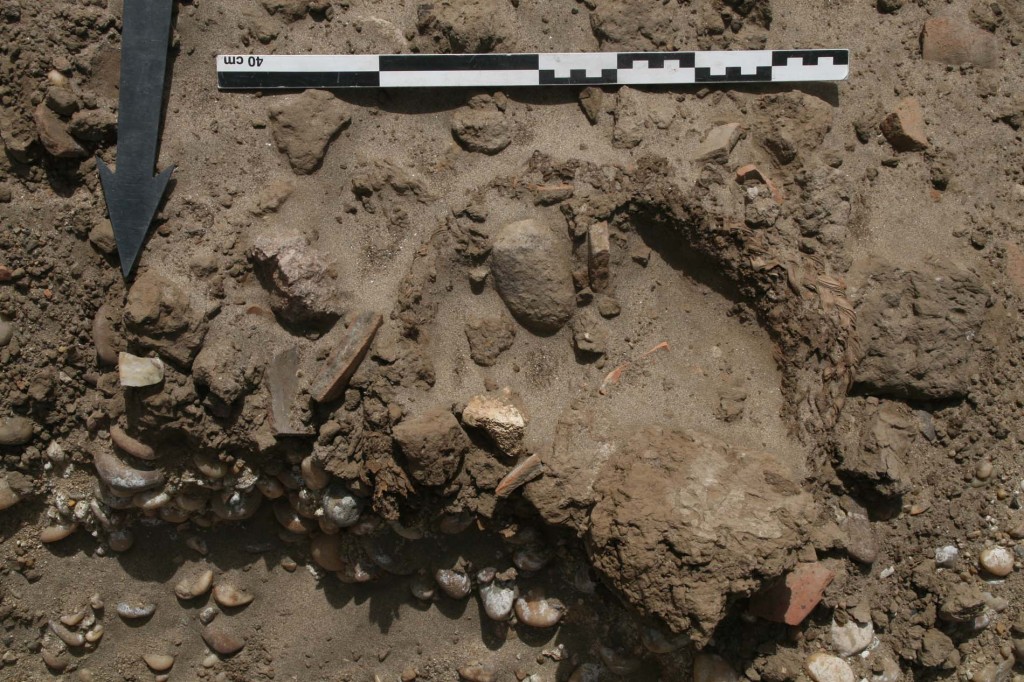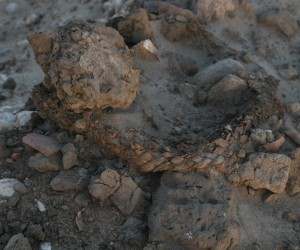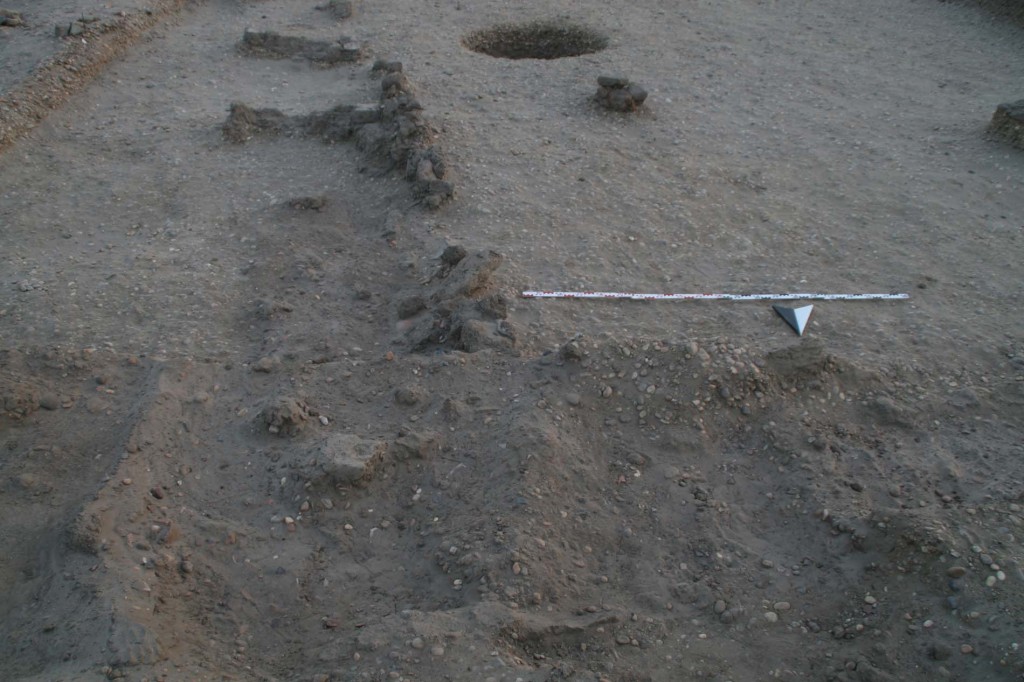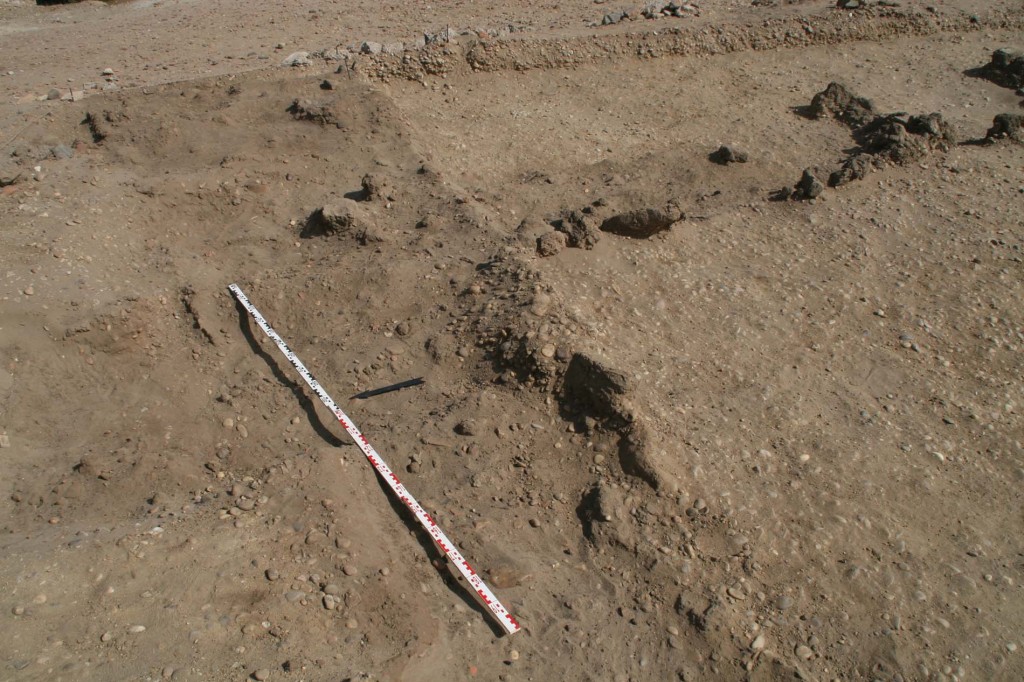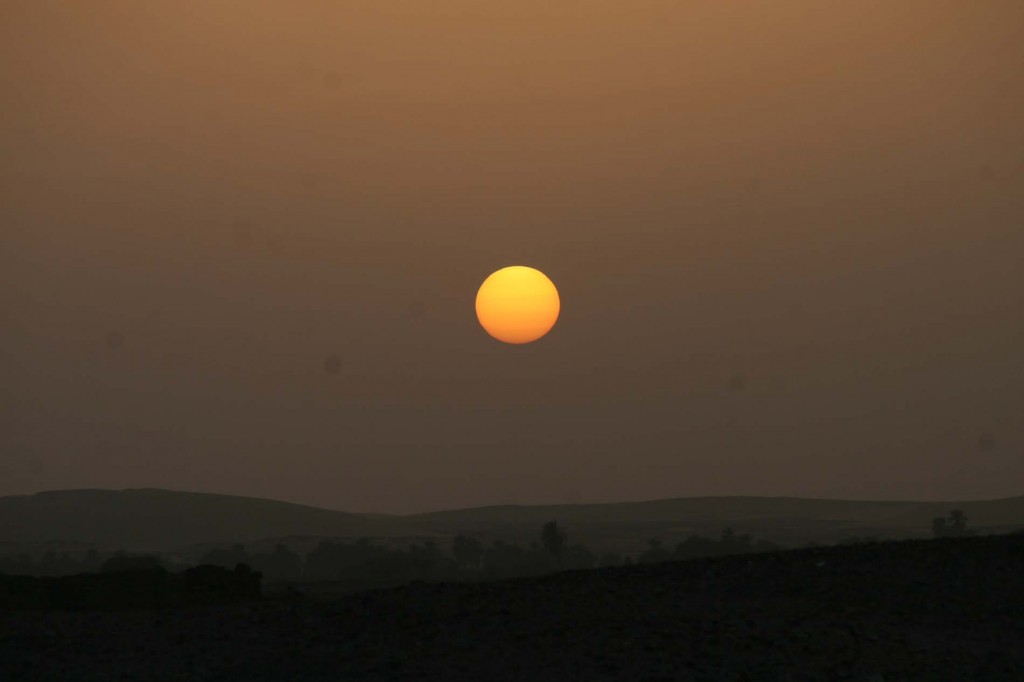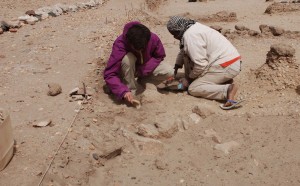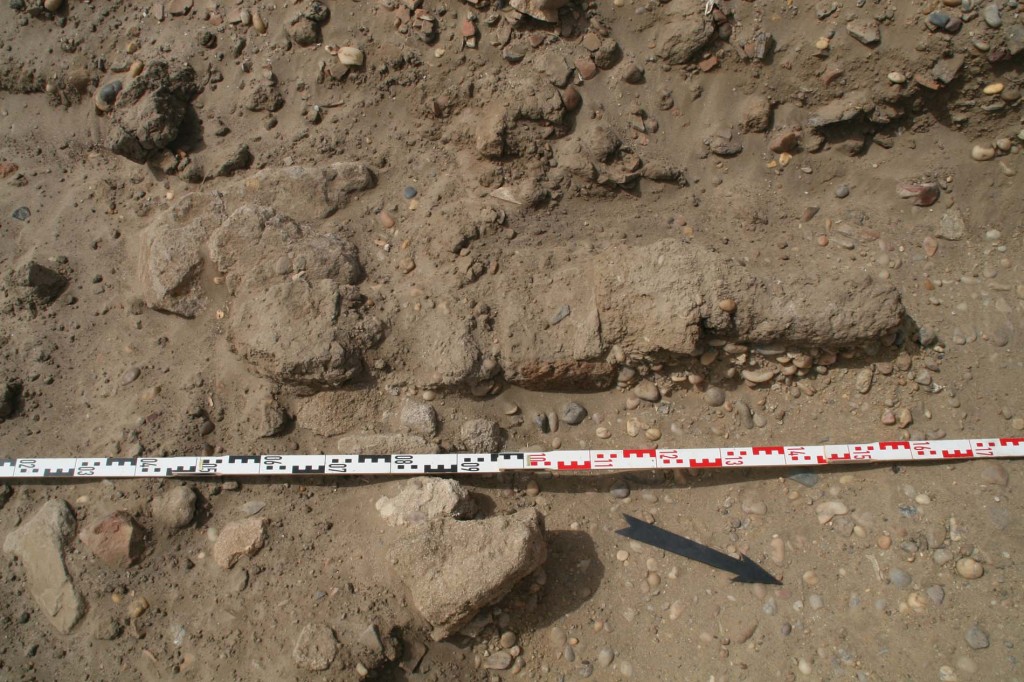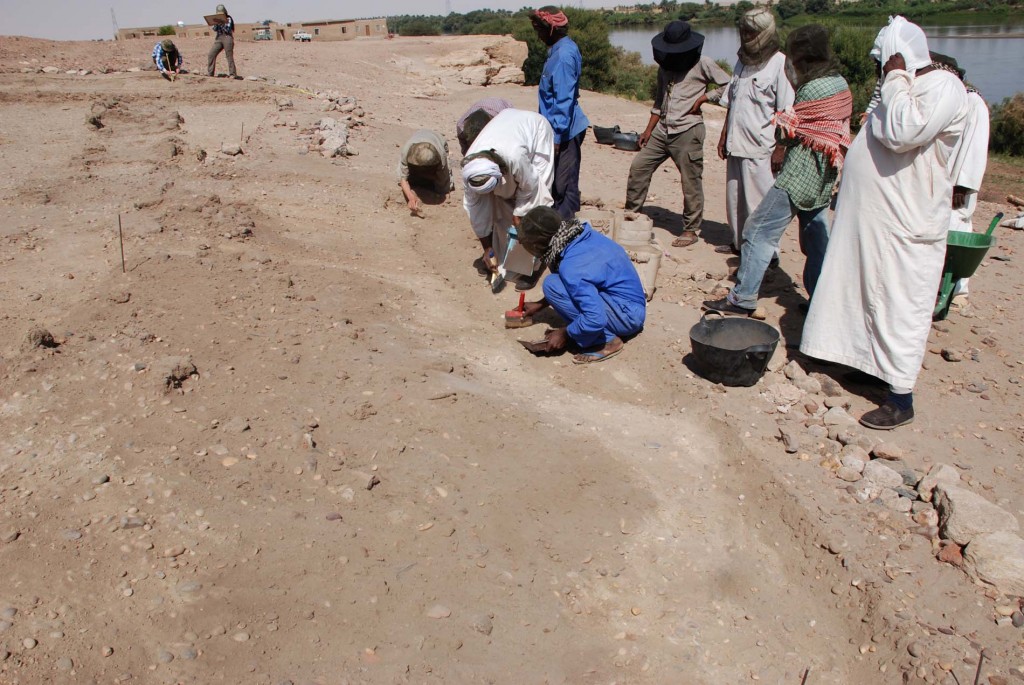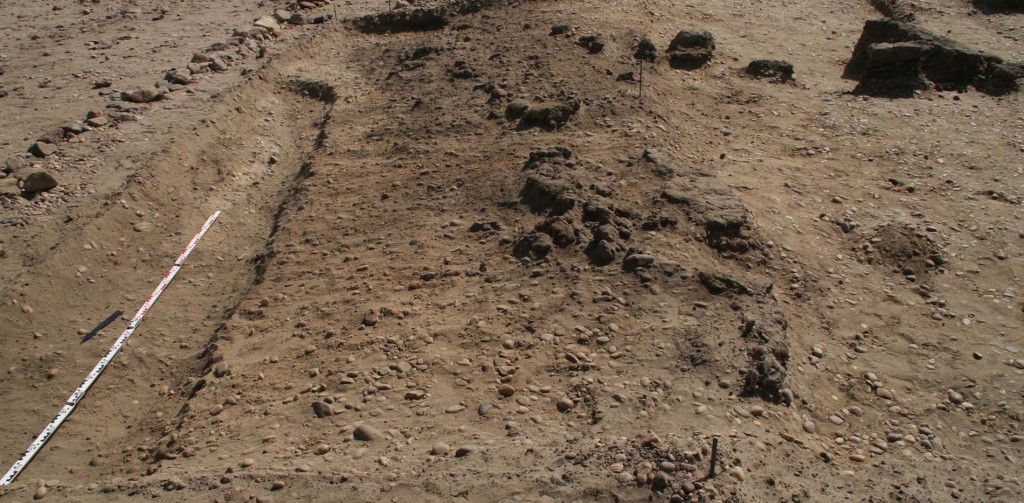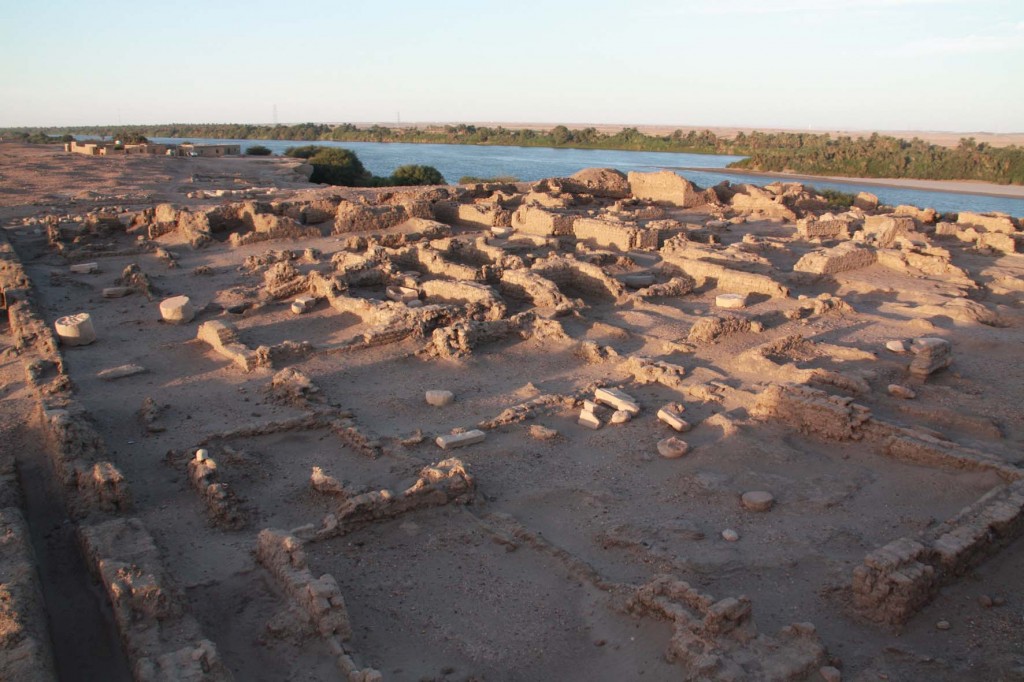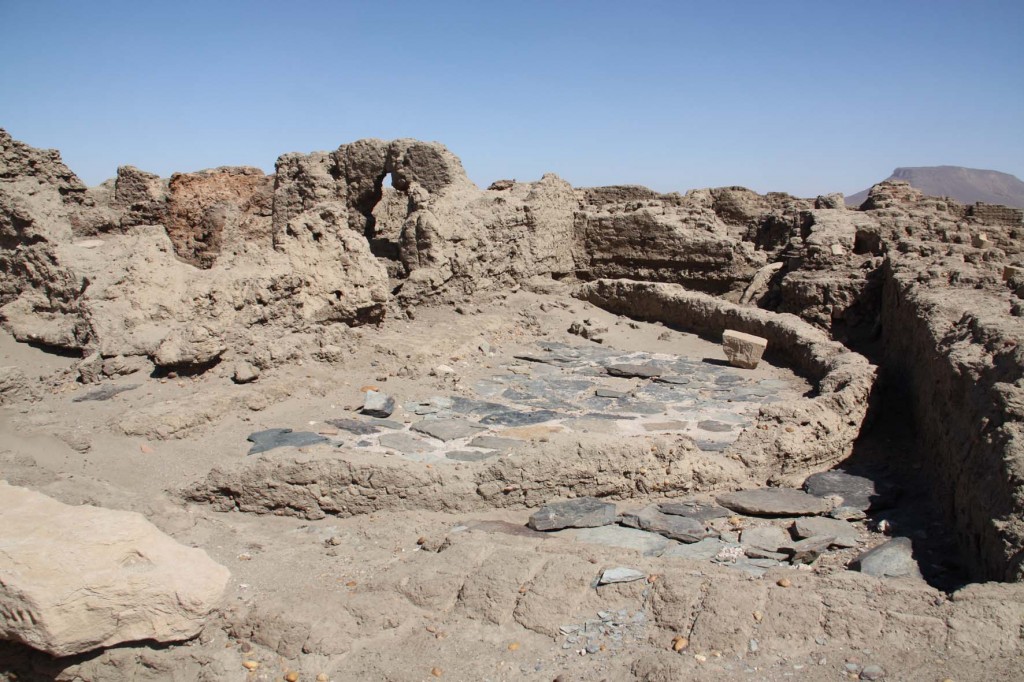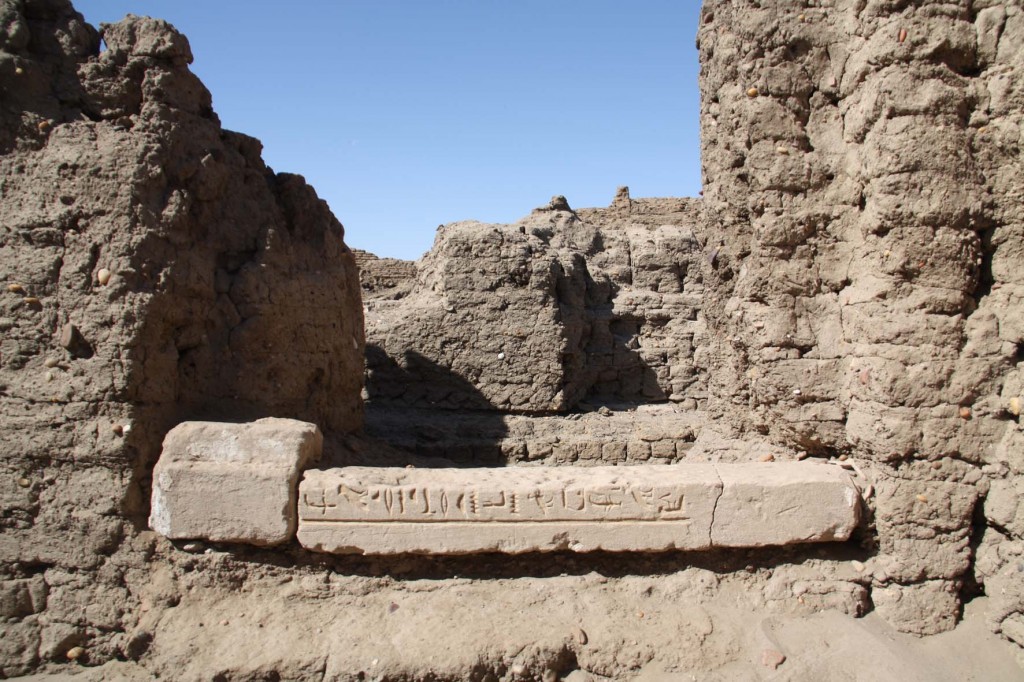We have just finished excavating for this season at SAV1E – we will continue with small scale cleaning and especially with final drawings and mapping at the site in the upcoming week – and will keep you posted! All together three more weeks will be dedicated to a post-excavation study season on Sai Island – all necessary documentation of finds from SAV1E including the finalising of lists, databases, and photographs, registration of objects and ceramics and drawing of finds.
For now, millions of thanks go to our team of Sudanese workmen d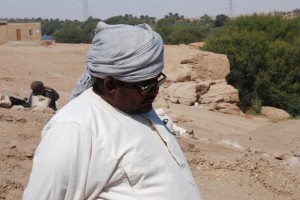 irected by Rais Imad Mohammed Farah – without them the work at SAV1E would not have been possible in the last 6 weeks! I am especially grateful for all of their support and mostly good spirit despite of sometimes extremely severe outer conditions (heat, nimiti-bugs and strong wind) and a very challenging site to excavate – negative impressions of walls are not easy to detect in gravel deposits! Looking very much forward counting on this “winning team” also in the next field season – insha’allah!
irected by Rais Imad Mohammed Farah – without them the work at SAV1E would not have been possible in the last 6 weeks! I am especially grateful for all of their support and mostly good spirit despite of sometimes extremely severe outer conditions (heat, nimiti-bugs and strong wind) and a very challenging site to excavate – negative impressions of walls are not easy to detect in gravel deposits! Looking very much forward counting on this “winning team” also in the next field season – insha’allah!

